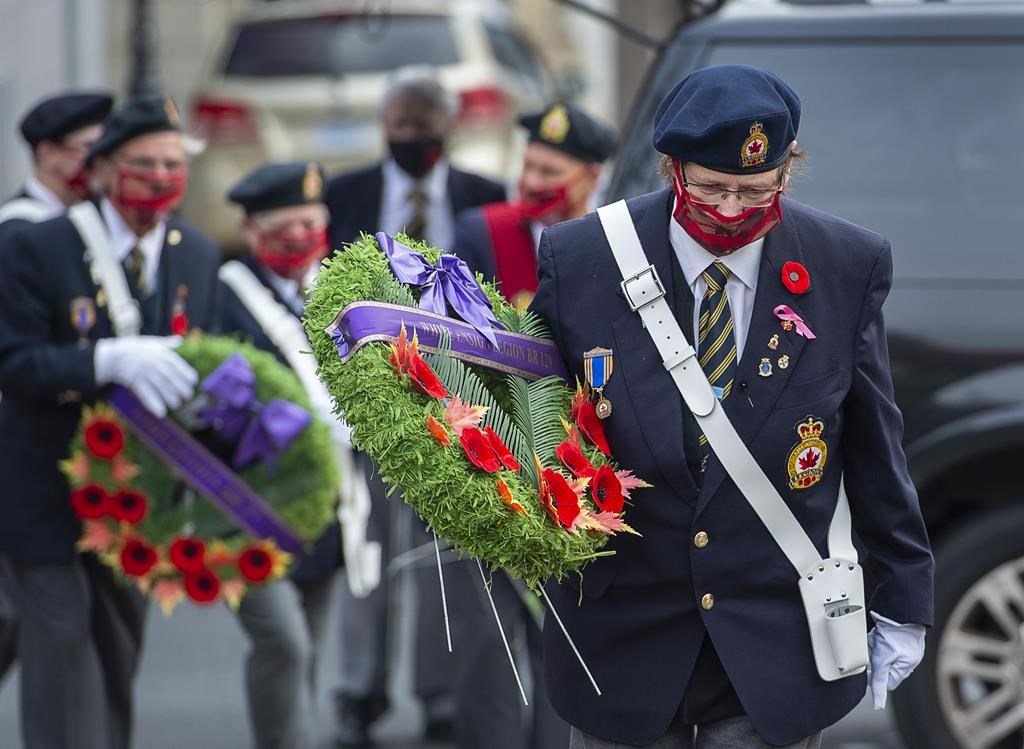HalifaxYesterday: The Royal Naval College of Canada (8 photos)
Posted Dec 23, 2019 04:00:00 PM.
Although the city of Halifax is only 270 years old, very young by old world standards, its history and that of the Maritimes is diverse and rich.
These days, because society as a whole seems to concentrate mostly on the daily fast pace of our here and now, the past often takes a back seat. Yet it is imperative that memories of our storied past not be cast aside. Historical remembrance is something to be sought after, explored and cherished as we move forward.
This column is devoted to featuring brief introductions to people, places and things of interest but mostly forgotten by time – though some may have attained footnotes in history.
Due to the condensed nature of these articles, supplemental image galleries with descriptions and credits will also be provided. I encourage readers to learn more by accessing local libraries, bookstores and the Internet.
The Royal Naval College of Canada
The Naval Dockyard in Halifax was established in 1758 during the Seven Years’ War as the headquarters for the Royal Navy's North American Station. The war was the first global conflict between imperial rivals Britain and France and spanned five continents. Built in 1774 at the northern most end of the Dockyard, Naval Hospital No. 1 was located near what was once part of Upper Water Street (now, Carroll Road). The first officer-in-charge was an influential Loyalist surgeon named Duncan Clark who held the position for eight years (1795-1803). (See Images 1a & 1b above)
In 1819, the hospital caught fire and was completely destroyed but was not rebuilt until many years later in 1863. Hospital No. 2 was constructed on the original’s location. The front view of the building shows its proximity to the transverse boundary wall of 1809 and the wooden Fever Ward to the right. To the left of frame is a small eight-sided smoking house built for recreational use by the staff. The hospital was shut down when the station closed in 1905. (See Image 2 above)
In 1908, with the prospect of a Canadian Navy on the horizon, naval cadets began their training on the Fisheries Protection Service cruiser CGS Canada. After the formation of the Royal Canadian Navy two years later, the former naval hospital was converted into a learning institution for young cadets who would eventually become the fledgling navy’s new generation of officers. In 1911, the Royal Naval College of Canada (RNCC) was founded by the Department of the Naval Service under the auspices of the Minister of Naval Service (and of the Department of Marine and Fisheries). The college was controlled by Rear Admiral Charles Edmund Kingsmill, the first director of the Naval Service. (See Image 3 above)
The RNCC’s officer-in charge position started off as a co-command with Commander E. H. Martin and Lt. Commander Edward A. E. Nixon, or “Nix” as he was known by the students and staff. However, Martin’s duties as captain superintendent of the Dockyard kept him away from the college for the most part. Teenaged students of 16 years and under entered the RNCC as cadets with the goal of becoming midshipmen. Upon graduation, they were required to perform one year of “big ship duty” aboard a navy vessel after which they would qualify for British warship service. (See Image 4a above)
The youngest cadet to enter the college in 1911 was 14 year-old Leonard W. Murray from Granton, Nova Scotia. He and many of his fellows went on to become leading naval figures of the RCN during WW II. The first four terms at the college each had a duration of two years until the Fifth Term when a third year was added. Approximately 150 cadets in total were taught at the RNCC. In the first graduation photograph of 1913, Lt. Commander Nixon and Commander Martin are seated first and second from left. Midshipman Murray is standing second from left. Five young men from this group lost their lives in The Great War. (See Image 4b above)
During its eleven year existence, the Royal Naval College of Canada was continually threatened with budget cuts and closure due to lack of support. The building suffered extensive damage from the 1917 explosion in Halifax Harbour and some the staff and students incurred injuries. Luckily, there were no fatalities. As the facility was no longer habitable, the boys were sent home for Christmas. (See Image 5 above)
In the spring of 1918, the RNCC was moved temporarily to the Royal Military College at Kingston, Ontario then to Esquimalt, British Columbia in September. Commander E. A. E. Nixon (promoted in 1915) held his position as commandant from the college’s opening in 1911 until a parliamentary decision finally closed its doors in 1922. Hospital No. 2 remained in the Dockyard for several more decades. After renovations, it was used by Reserve Command Division / Administration as late as 1997. In due course, the building was demolished. (See Image 6 above)
Joel Zemel resides and works in Halifax. He was awarded the prestigious 2016 John Lyman Book Award (U.S.A.) in the category of Canadian Marine and Maritime History for his book Scapegoat, an in-depth examination of the legal proceedings following the 1917 Halifax Explosion. He was the historical and design consultant for Canada Post Corporation's stamp commemorating the 100th anniversary of the Halifax Explosion and is included in HRM Archives's “List of Professional Researchers.”








